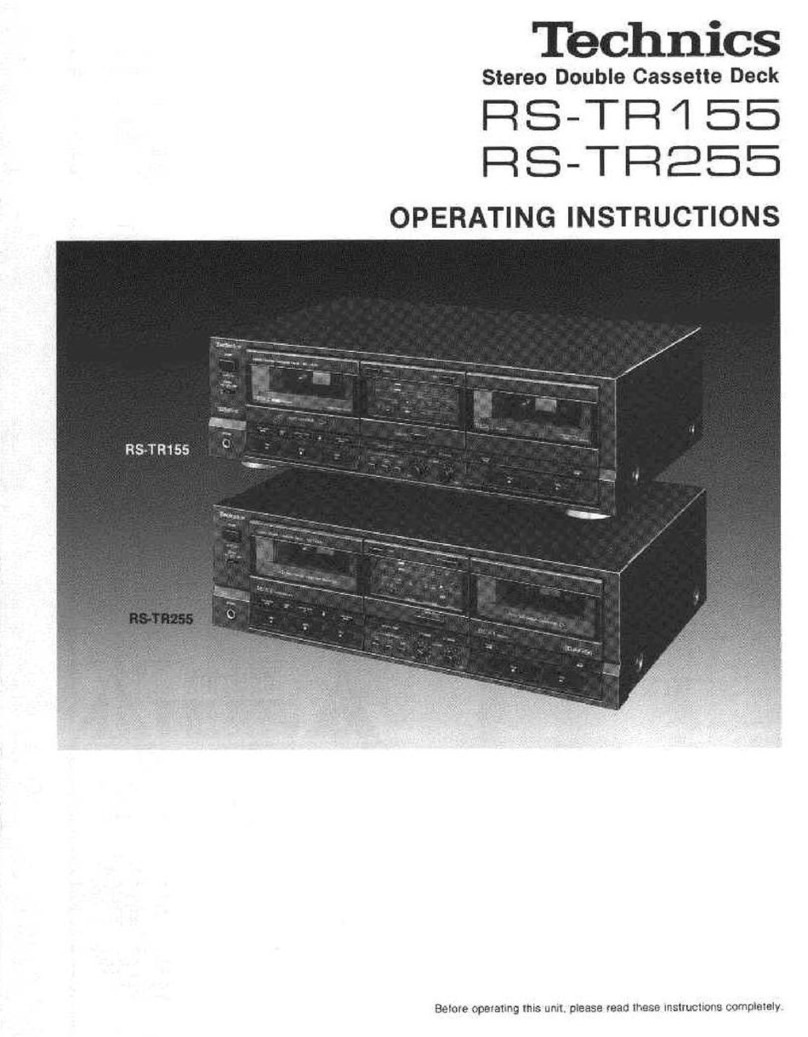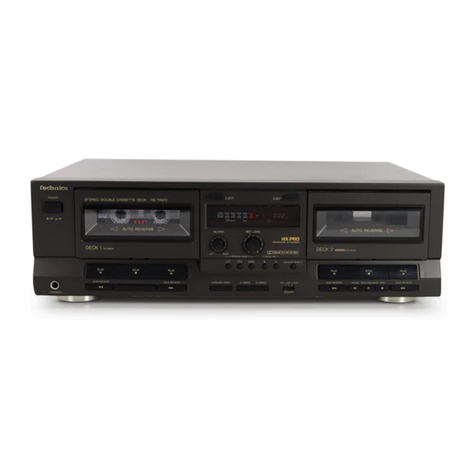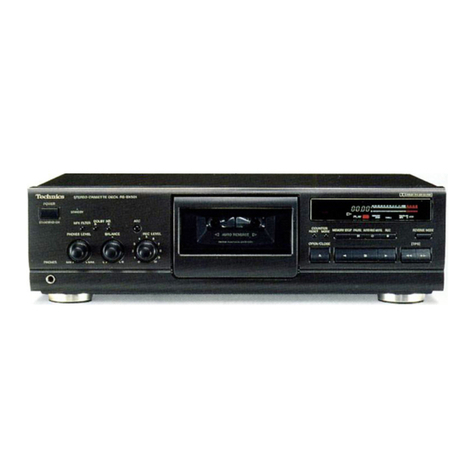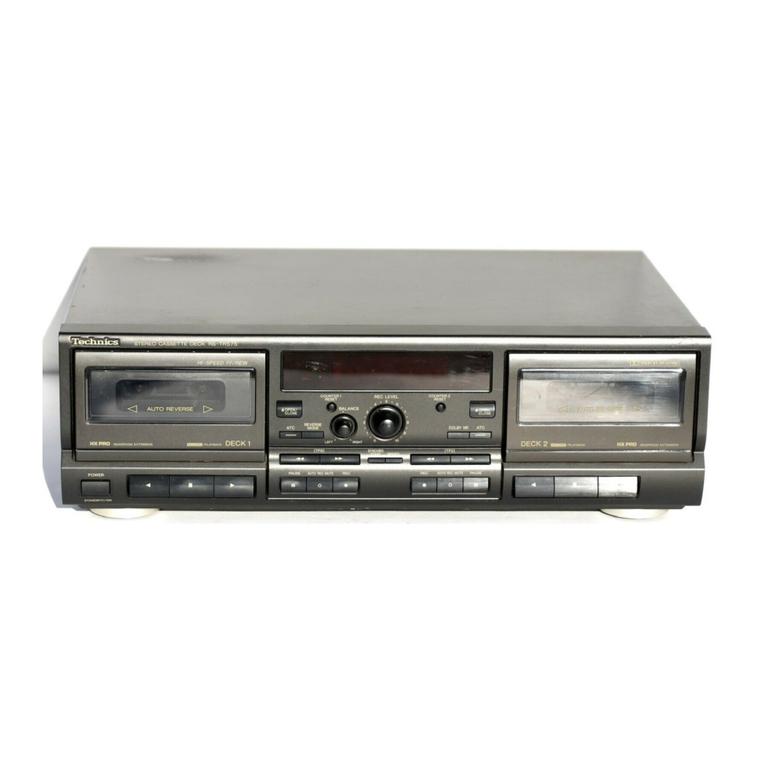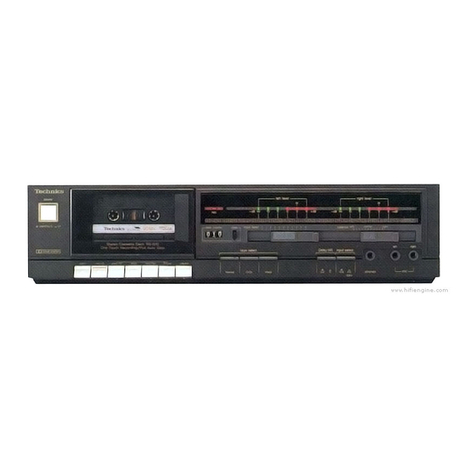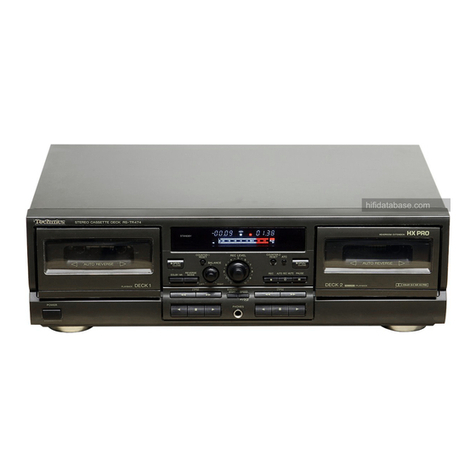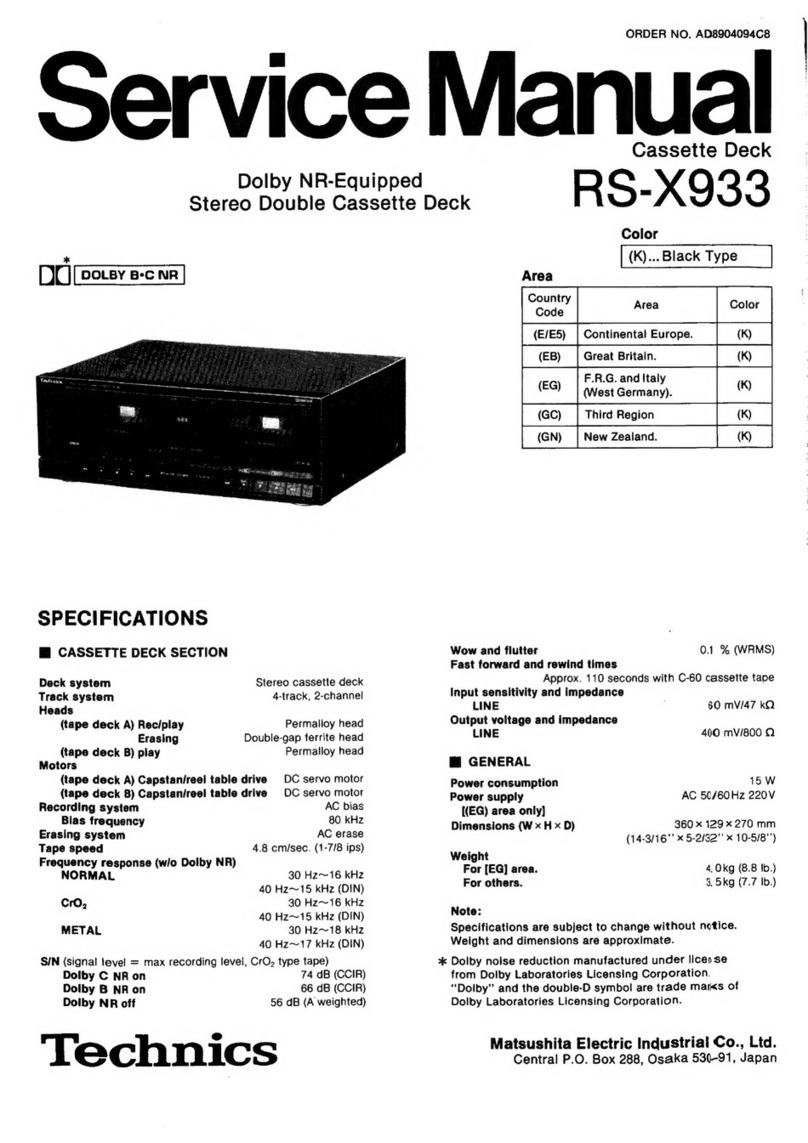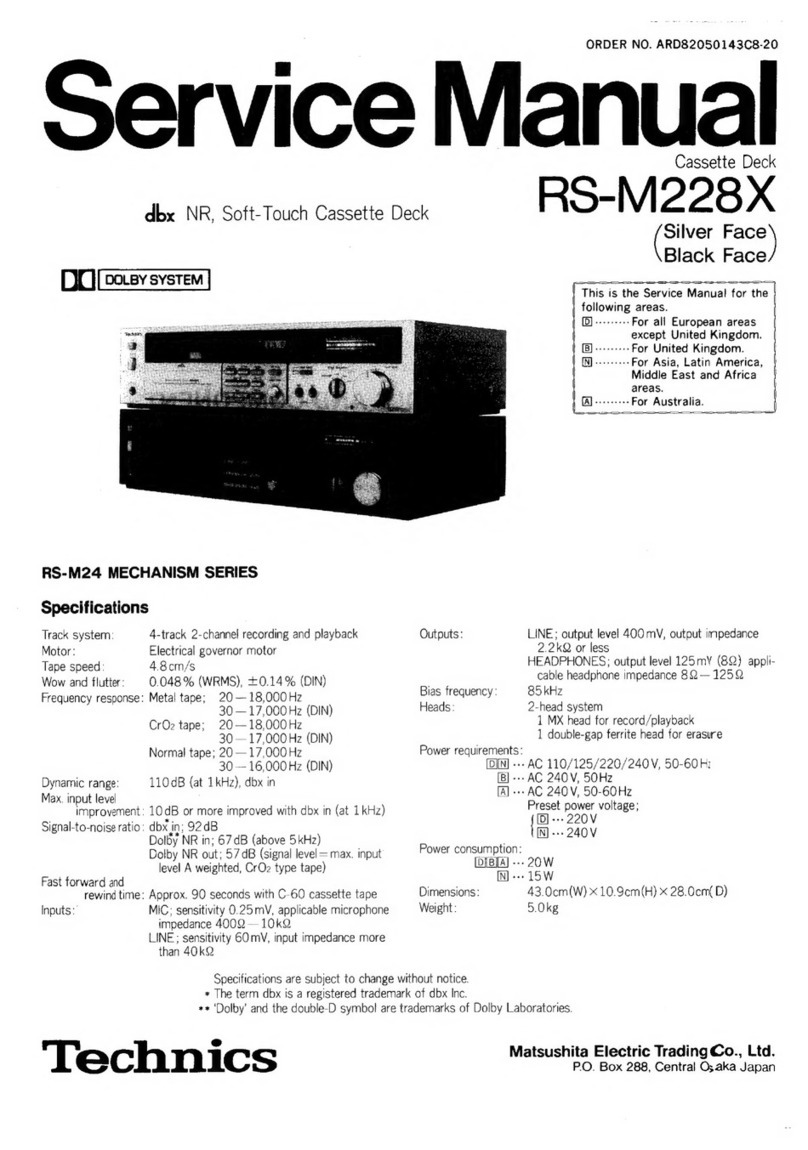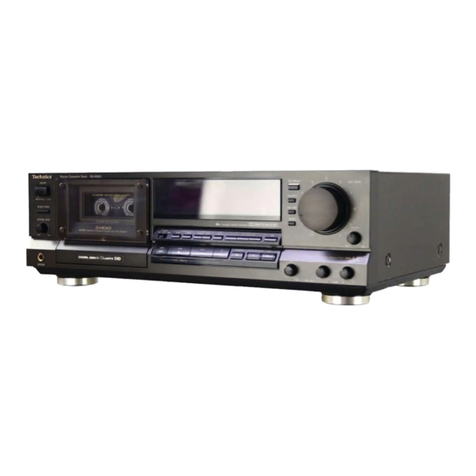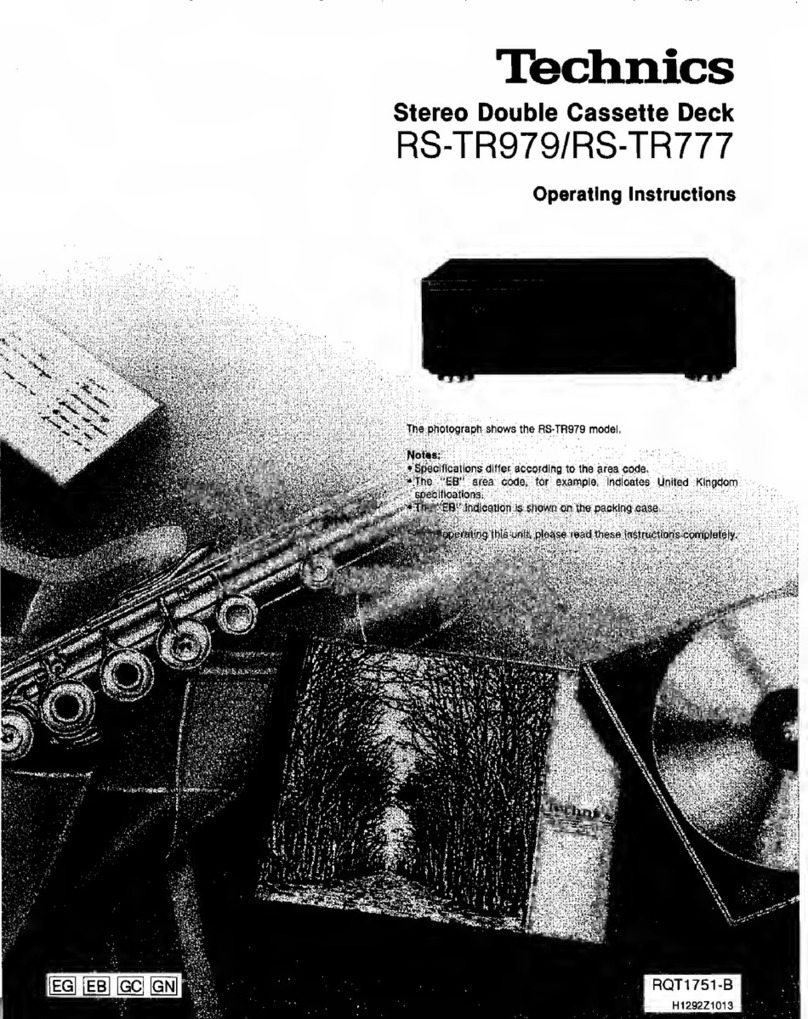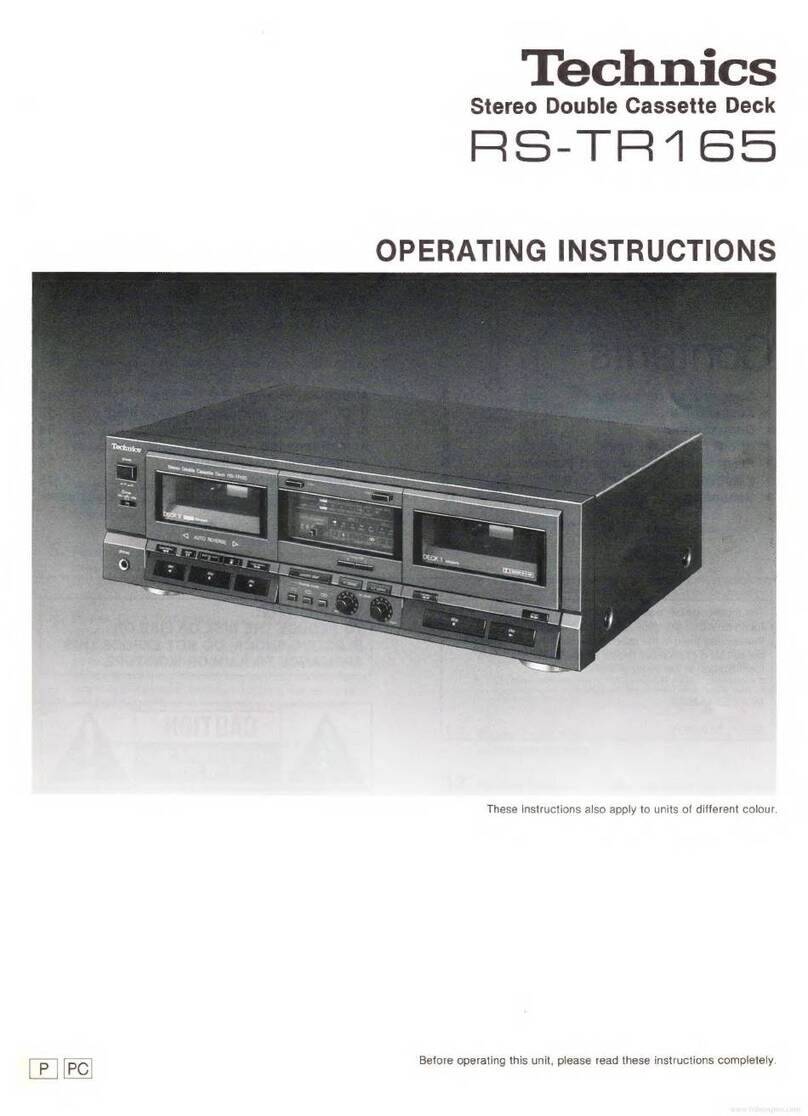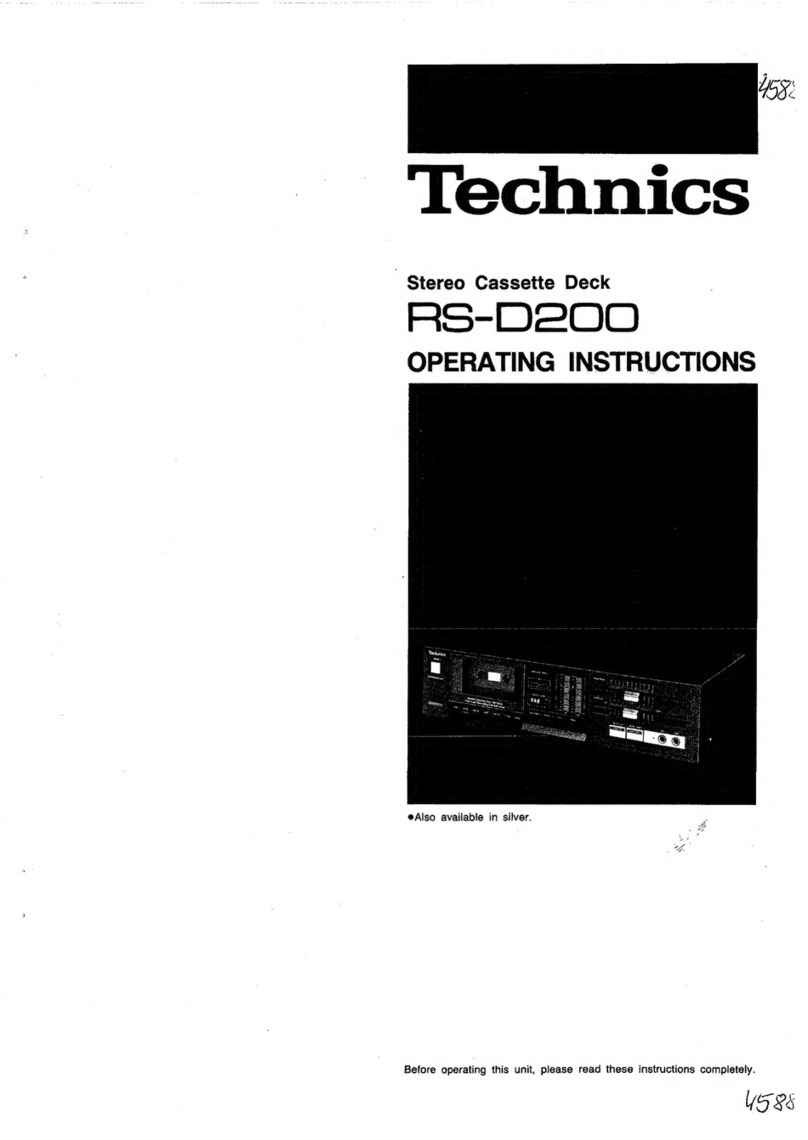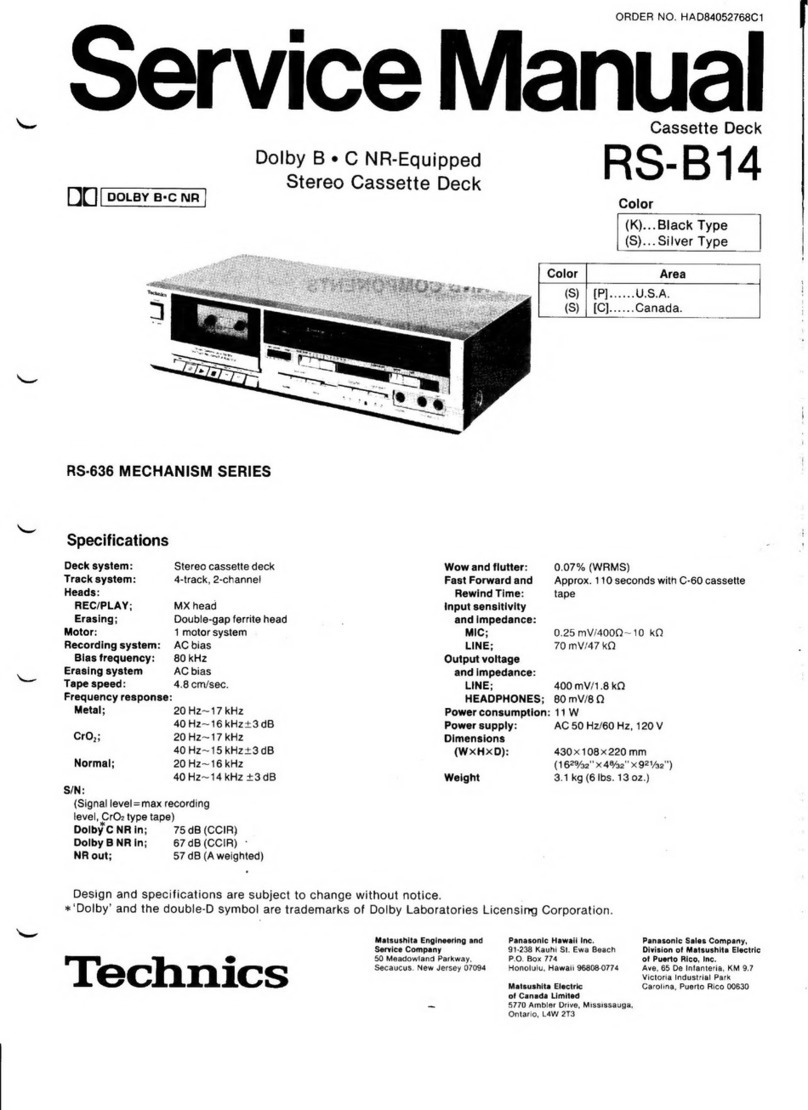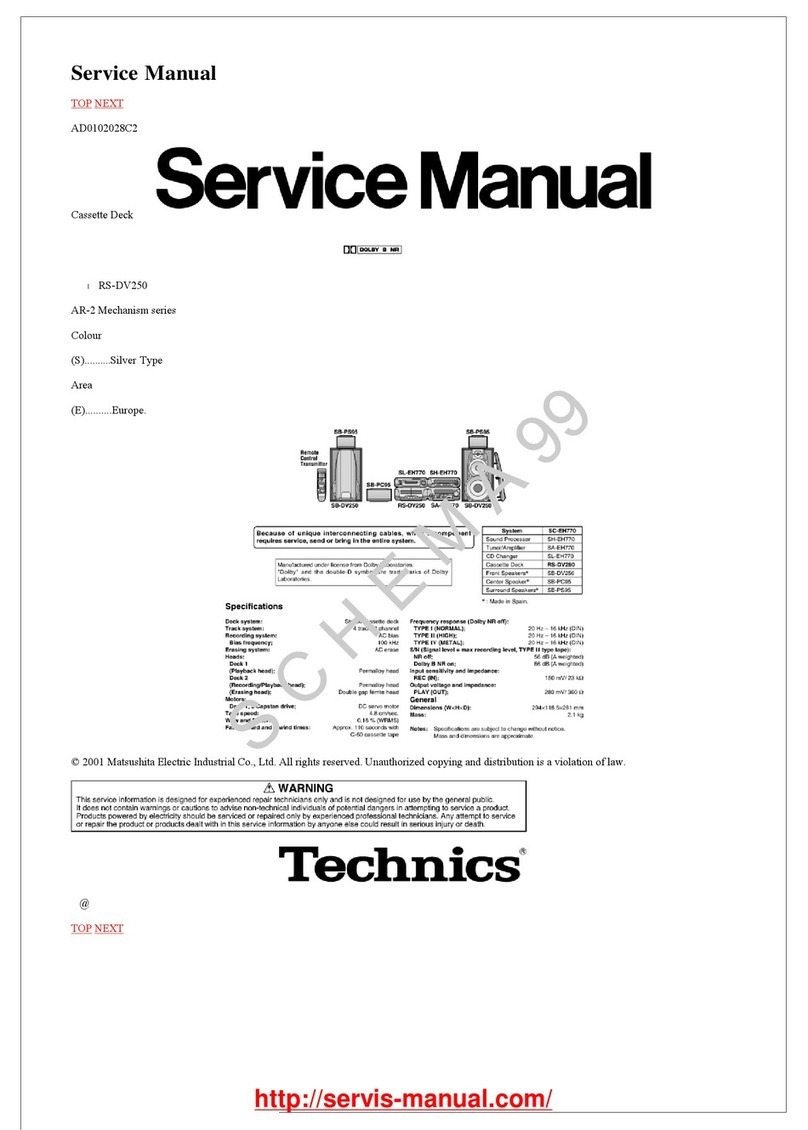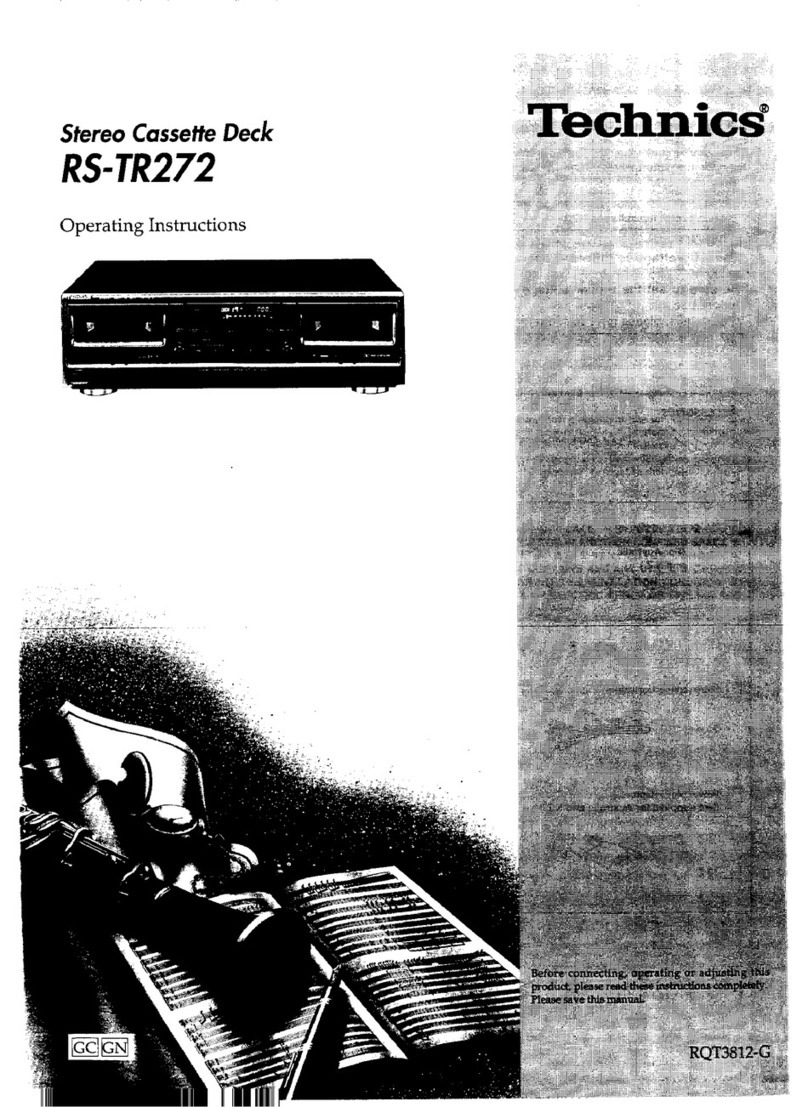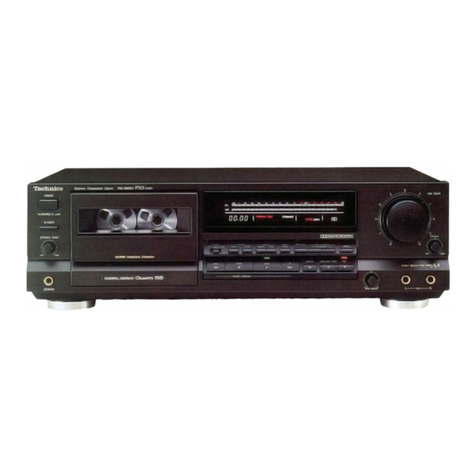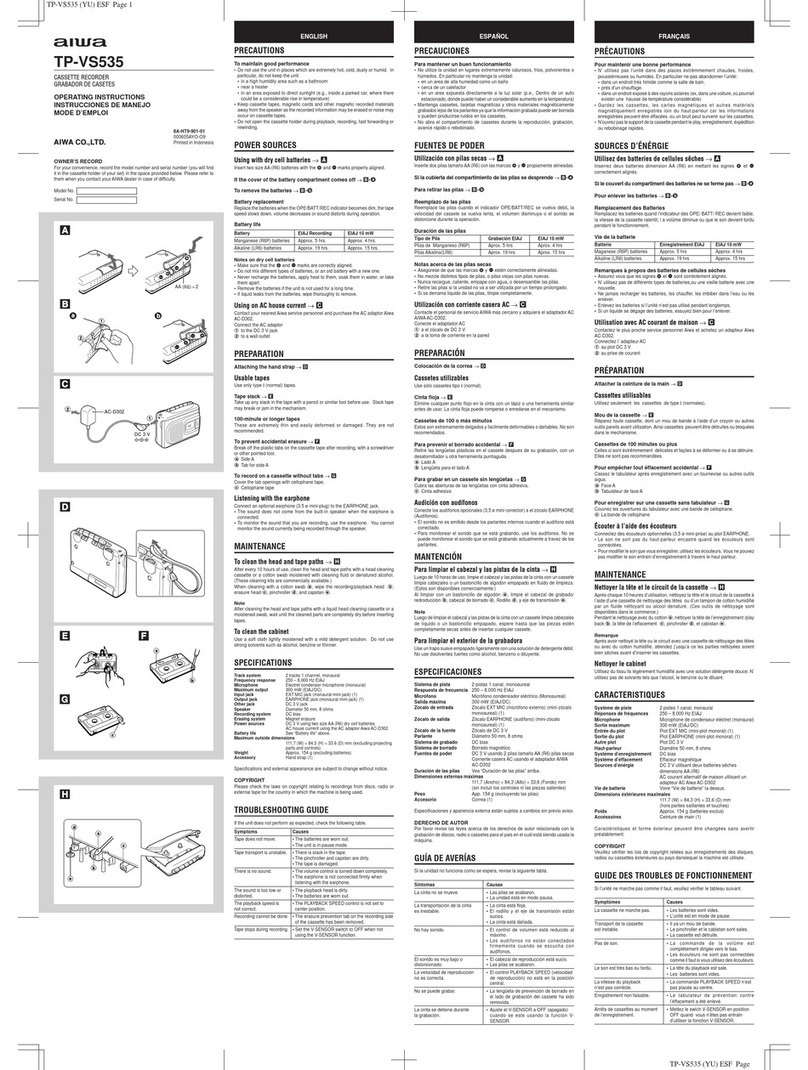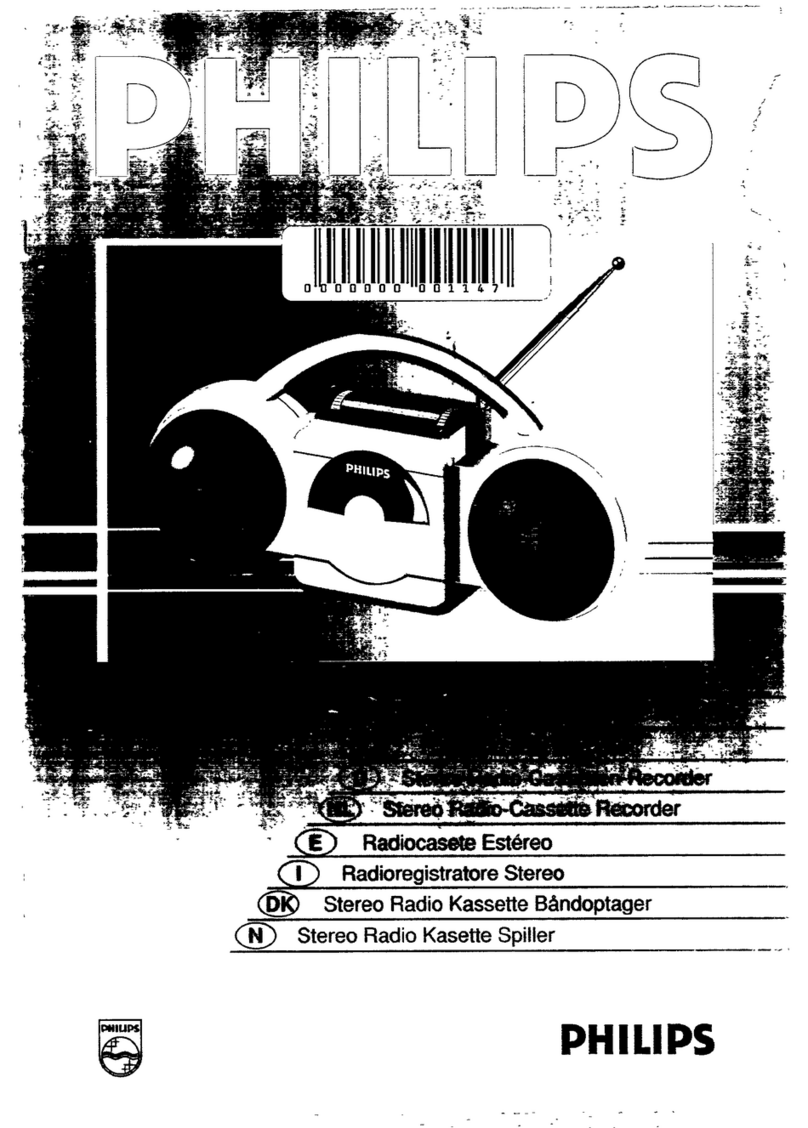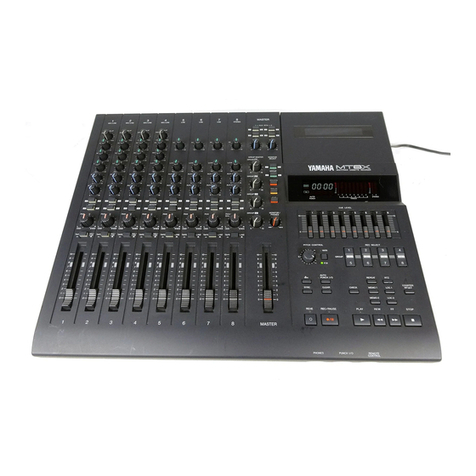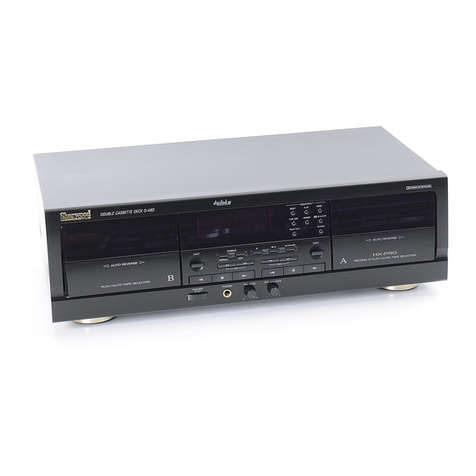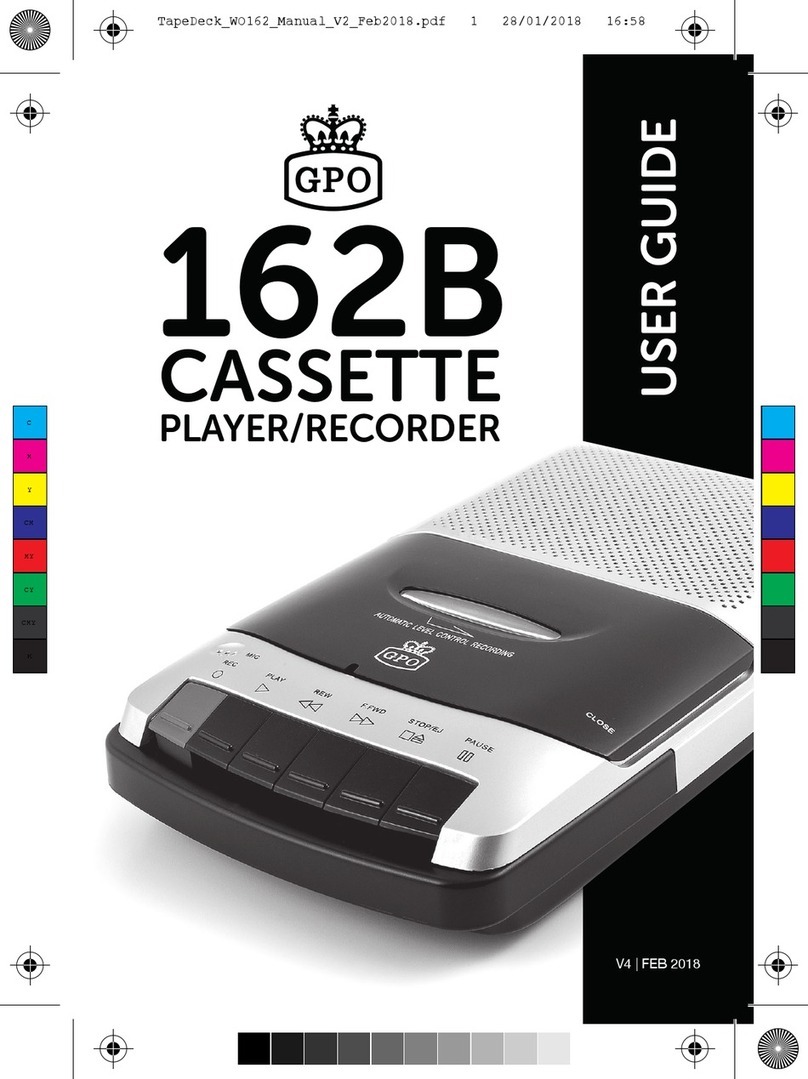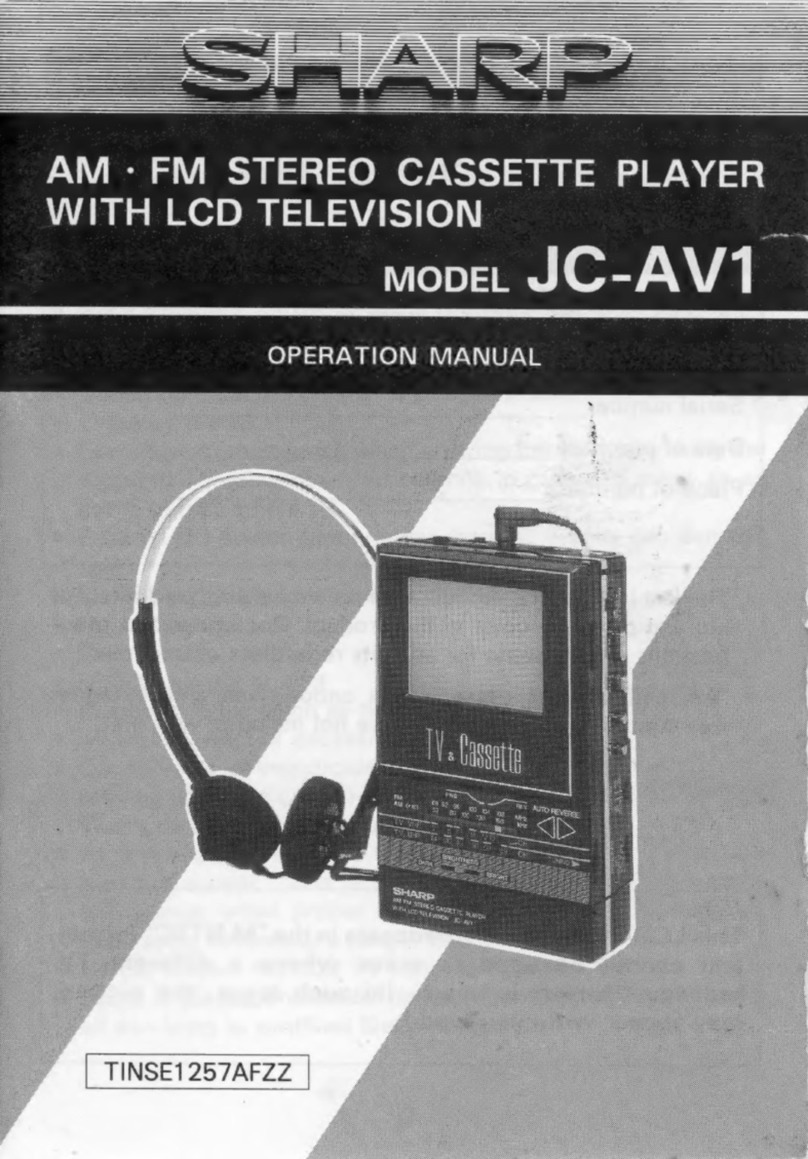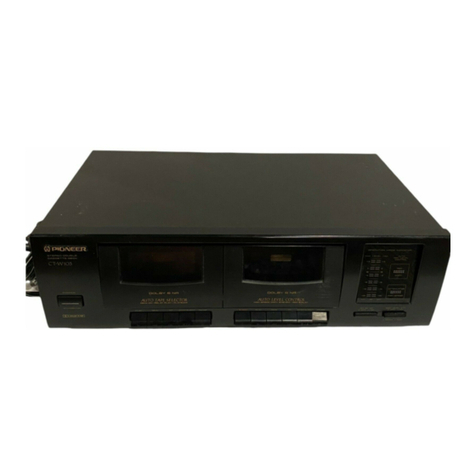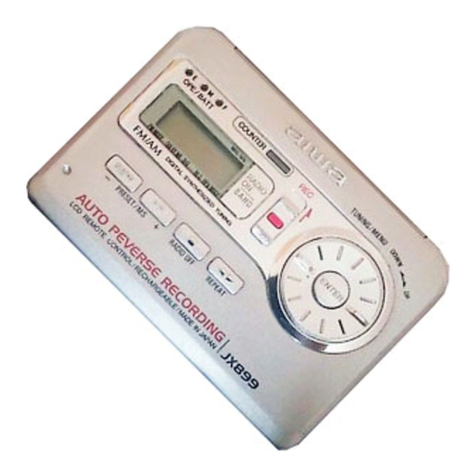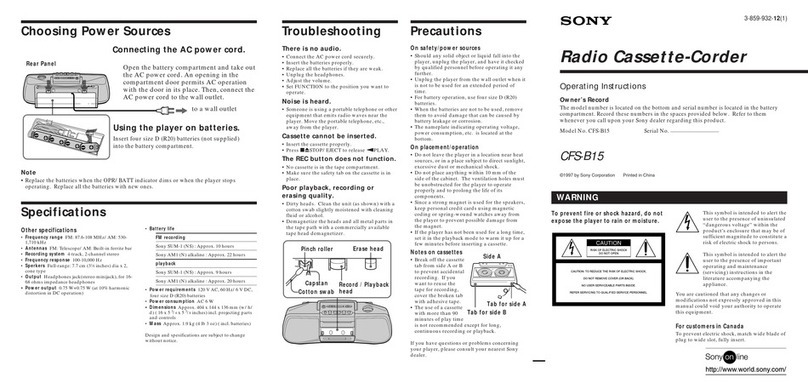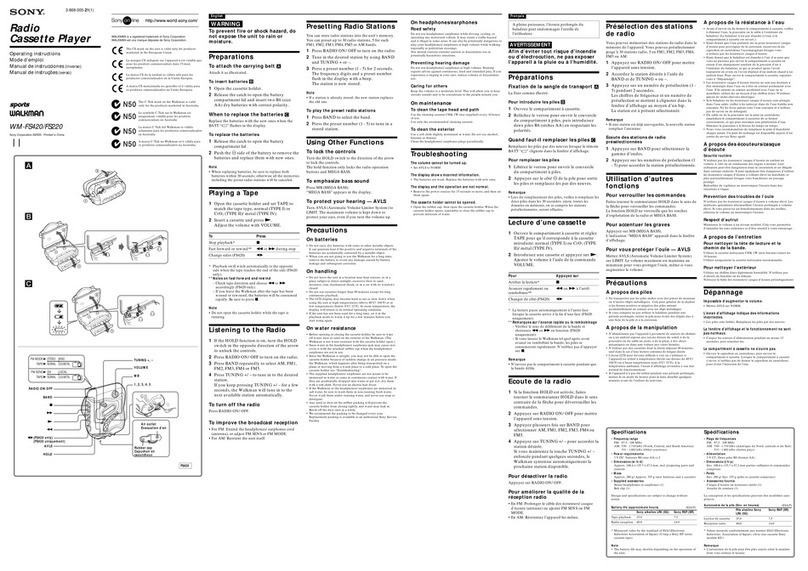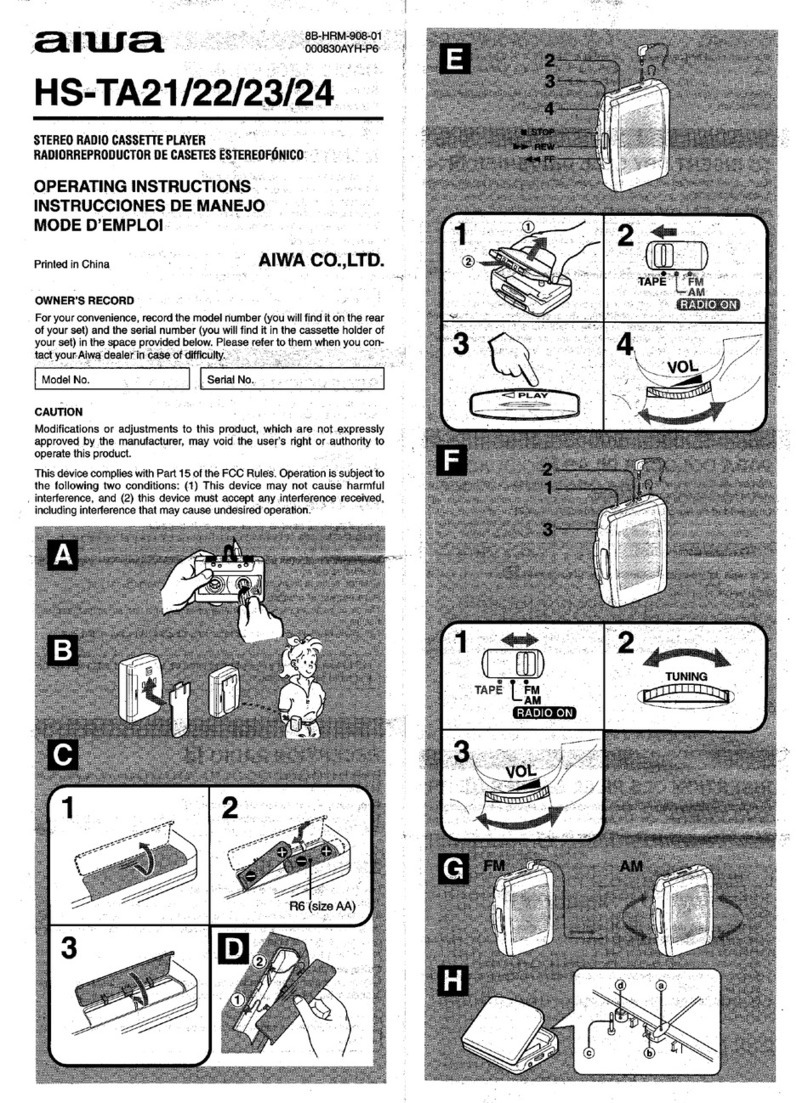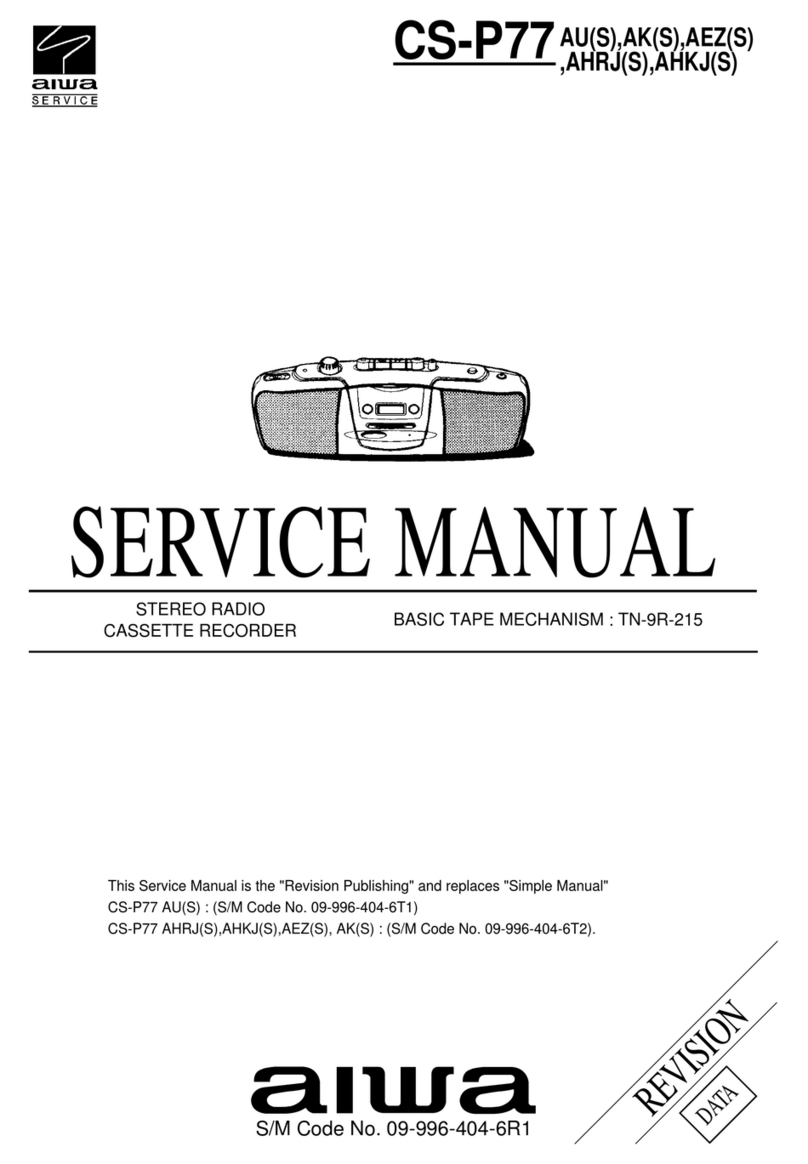
RS-X102
|
Mi
CONTENTS
Page
ACCESSORIES.
..........-sssessssssctsesrsccsncssnssenssensonsensonensecsesnsseunerssees
2
INTERNAL
CONNECTION
OF
FL
.u......sccsssssssessessessssesnersseeee
CONNECTIONS
otaare
WIRING
CONNECTION
DIAGRAM.
LOCATION
OF
CONTROLS
........ccssesressesressesccrsnsreoesensseneons
3,4
TERMINAL
FUNCTION
OF
1C7S...........cssssssseecessoeseensoenee
DISASSEMBLY
INSTRUCTIONG..........ccccsscssssssssssseseneeseens
5~8
PACKING
bascccie.
rect
eocicatecish
eck
ee
ae
tise
cet
eee
duaataneel
«
INFORMATION
ON
POWER
SUPPLY
FIXTURE.................00+
9
REPLACEMENT
PARTS
LIST...
MEASUREMENTS
AND
ADJUSTMENTG...............
-
10~12
RESISTORS
&
CAPACITORG...........
BLOCK
DIAGRAM........scscccsssesssssssncsssnsecsesserserseneesssensneenens
13,
14
EXPLODED
VIEWS
(Cabinet
parts).
PRINTED
CIRCUIT
BOARDG...........-cssssssssssseseessesensrstees
15~18
REPLACEMENT
PARTS
LIST...........00000
SCHEMATIC
DIAGRAM
.........s:scssccsessssssersesseaseerenenensenees
19~23
EXPLODED
VIEWS
(Mechanica!
parts)..
TERMINAL
GUIDE
OF
IC’S,
TRANSISTORS
AND
REPLACEMENT
PARTS
LIST
............0+0000+
DIODES.
.........sscessssesnsersvsnnssssnsnsesssessensencesenennerenernenenseseneoss
23
Mi
ACCESSORIES
———"
3-core
flat
cable
L-type
cable
Stereo
connection
cables
(REX0346)
:
(SJP2257T)
:
(SJP2249-3)
Amplifier
Make
connections
in
the
numbered
sequence
by
using
the
included
cables.
Stereo
connection
cable
ON
ag
cunnent
OFF
7"
SENSOR
AC
OUTLET
ge
yy
©)
[ed
UNSWITCHED:
White
(L)
Red
(R)
=
SYSTEM
CONTROL
CONTROL
[1]
Connect
the
stereo
connection
cables.
[2]
Connect
the
L-type
cable.
[3]
Connect
the
flat
cable.
SYSTEM
CONTROL
OUT
This
terminal
is
used
to
connect
a
Technics
compact
disc
player
or
a
Technics
stereo
graphic
equalizer
with
the
“SYSTEM
CONTROL
IN”
terminal.
This
terminal
is
used
to
connect
a
Technics
muiti
com-
pact
disc
player
with
the
“CONTROL”
terminal.
RAO
Aw
Cassette
deck
SYSTEM
IN
QUT
(TO
CD)
INE
OU)
mn
Goose
SYSTEM
CONTROL
OUT}
(CONTROL
